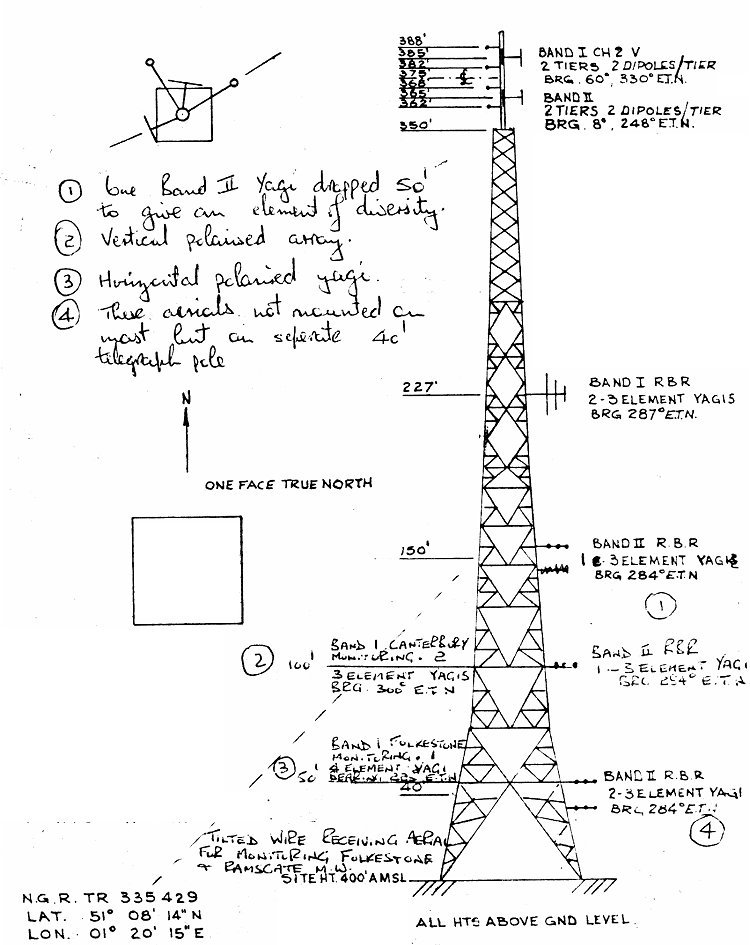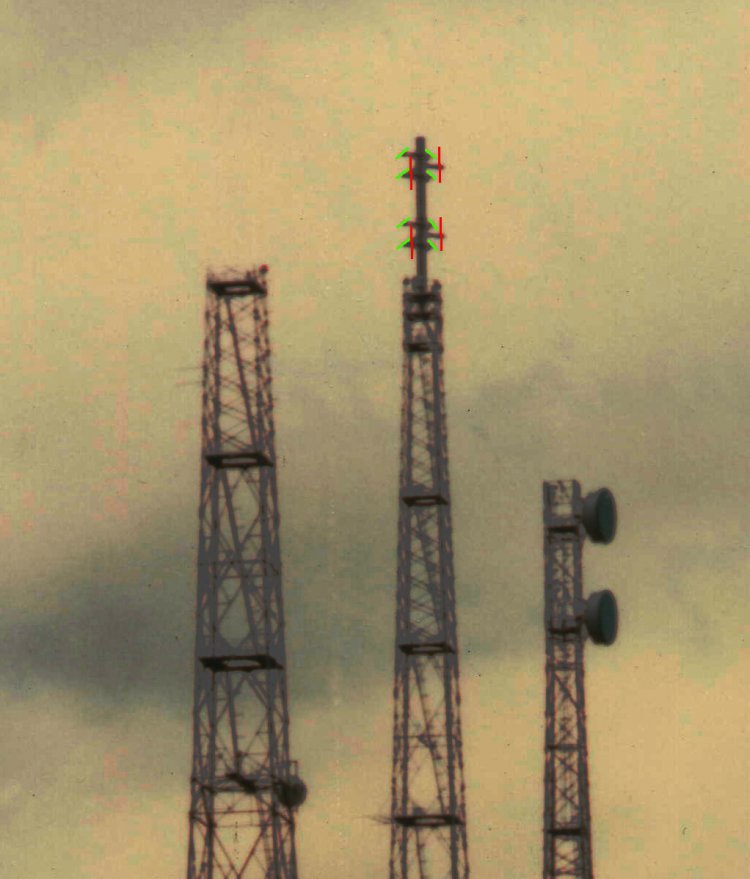 |
UK Broadcast Transmission |
|
|||||||||||
THE TRANSMISSION GALLERY
SWINGATE
| Photos by Peter Facey | Page last updated: 2023-08-29 |
| BBC TV entered service at Swingate on 21st April 1958 initially as a "temporary" service and used the most southerly "No 1" of the four ex-Chain Home towers which were then at Swingate. From 1st February 1961 the service was transferred to the permanent antenna on "No 3 tower" - the one still used for broadcasting. The 405-line service closed in January 1984 Swingate seems to have been regarded sometimes as a main station and at other times a relay of Crystal Palace. The feed arrangements for Band I TV involved at various stages direct line from London (for sound), line via Tolsford Hill (for vision) and later off-air reception at Wrotham and with an SHF link via Dover. Other information suggests the route via Tolsford Hill was shared and direct reception from Crystal Palace (405-line) was used when the link was required for EBU purposes FM radio went into service on 8th August 1961, using dipoles interleaved with those for Band I. Again Swingate has the status of a main station although the programme feed was off-air from Wrotham. The site was re-engineered for mixed polarisation in 1984, with Radio Kent added on 23rd July 1984 and Radio 1 on 10th June 1992 |

| Found via Geograph, Peter's photo shows the original arrangement with vertical dipoles for television and horizontal dipoles for FM on a cantilever. The wooden pole to the left of the towers is probably the one mentioned in the diagram below, carrying some of the many Band II receive antennas In those pre-mobile phone days it's likely that all the dishes were for MOD use. The cross-channel troposcatter link is immediately obvious! BELOW: at the expense of quality the crop and zooms below do show some shadowy detail of the transmit aerials. |

| We may be able to see the Band I receive antennas at the bottom of this image |

| The BBC Research paper below gives further details of the site and its history - and states that Band II used four tiers (as implied by the diagram above, but contradicted by the note alongside) each with "two tangential dipoles and triangular reflectors" A significant point made in the report was that Dover did not provide adequate television coverage to Canterbury - hence a local relay was later provided. BELOW: a later revision of the mast outline seems to correct the anomaly in the version above. |

| Below: based on the information we have we show a version with the tx antennas highlighted; Band I in red and Band II in green. |


| It is also just possible to see receive antennas on the pole. A similar arrangement at Sheffield was also installed in the 1960s and only "retired" quite recently! |
BBC RD: Service area of the Dover television and VHF sound transmitters (1962)
| |
Back to TX Gallery index | TX main index
|